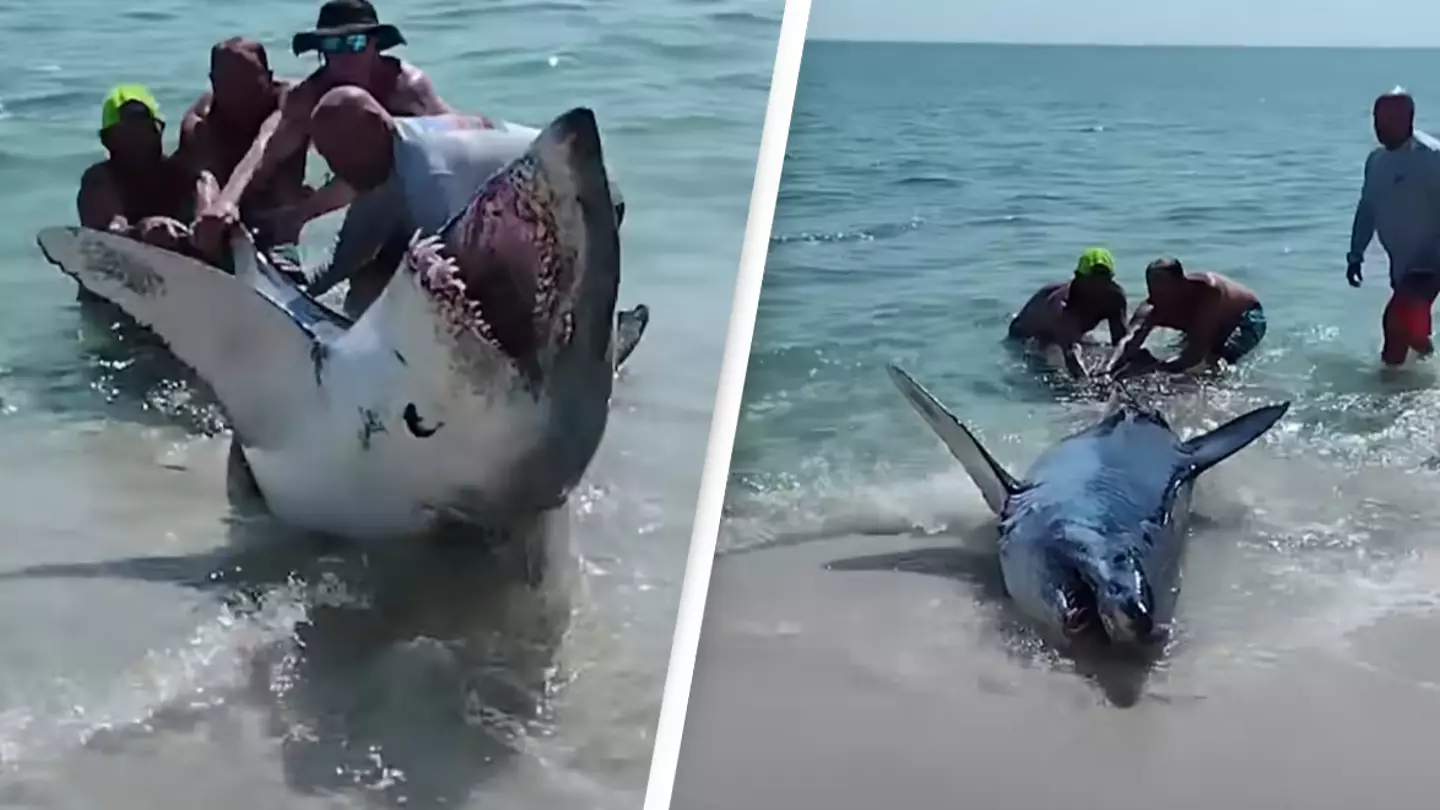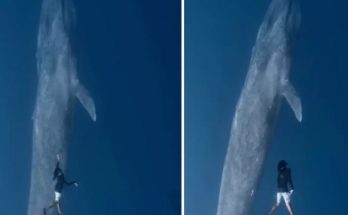
Back in 2016, researchers began a study on Greenland sharks, which are believed to be the longest-living vertebrates known on Earth, as per scientists.
And in fact, experts found a shark that had been roaming the same waters since 1627 – but how did they go about making such a discovery?
Well, they used a method known as radiocarbon dating to work out the ages of the 28 animals they were studying.
And with that, they made the astonishing discovery that one female in the group was about 400 years old.

The Greenland shark roams in the Arctic ocean (Getty Stock Photo)
Julius Nielsen, the lead author on the study and a marine biologist from the University of Copenhagen, said: “We had our expectations that we were dealing with an unusual animal, but I think everyone doing this research was very surprised to learn the sharks were as old as they were.”
Previously, it was believed there would be no way to determine the age of Greenland sharks, as researchers would often look at the tissue that grows in layers on the back bones of the Great White, for example.
Nielsen added to the BBC: “But the Greenland shark is a very, very soft shark – it has no hard body parts where growth layers are deposited. So it was believed that the age could not be investigated.”
Despite believing it would never have been possible, the team of experts discovered a clever way to work out the shark’s age.
Explaining the method, Neilson revealed: “The Greenland shark’s eye lens is composed of a specialised material – and it contains proteins that are metabolically inert.
“Which means after the proteins have been synthesised in the body, they are not renewed any more. So we can isolate the tissue that formed when the shark was a pup, and do radiocarbon dating.”
Radiocarbon dating does not provide exact dates, but even with the researcher’s lowest estimate, the shark is extremely ancient.
“Even with the lowest part of this uncertainty, 272 years, even if that is the maximum age, it should still be considered the longest-living vertebrate,” Nielsen continued.
The shark’s very long life has gone viral on Reddit, with a few jokes being made here and there.
“That guy has no idea how much stuff has happened on land since 1627. It’s a TON of stuff,” one Redditor quipped.
“Bro looks tired af,” a second added, while a third remarked: “Can’t believe I feel bad for a shark. Imagine humans would not die we would go insane lol.”
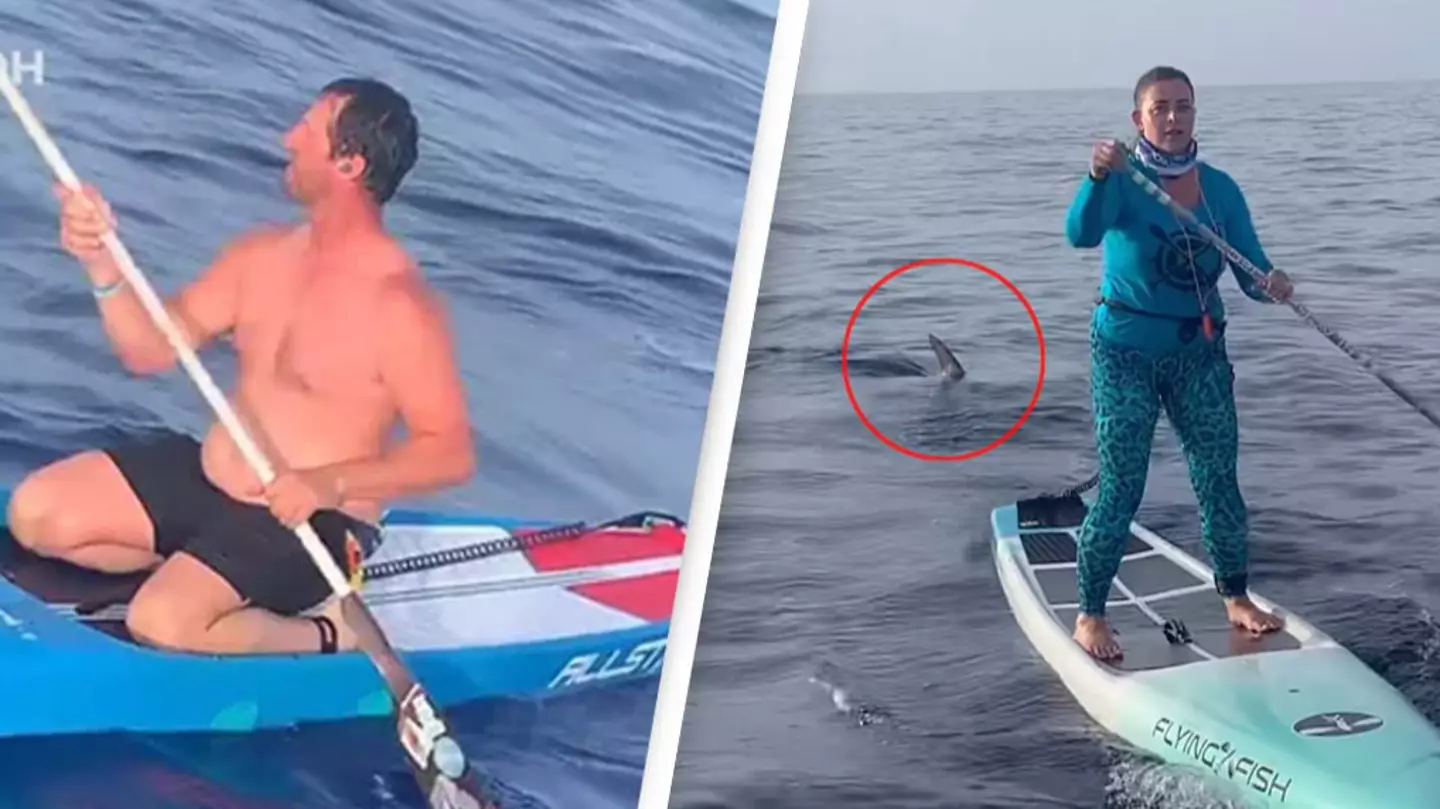
If there’s one thing you really don’t want to see when you glance down as you paddle board – especially for someone like me who has zero balance – it’s a fin. However, it’s the sight Malea Tribble saw when paddling along an area of water between the Bahamas and Lake Worth, Florida.
Malea was out paddle boarding in June last year when a fin arose from the depths below and, even worse, began to follow her.
Footage of the incident shared to social media shows Malea – remarkably – keeping her cool as she’s ushered back inland by her husband, Ricky.
While Malea makes it back to the safety of the boat, another paddle boarder, Gabe, remains out at sea and the shark ends up making its way towards him instead.
Onlookers can be heard shouting desperately at Gabe to stay where he is while questioning what type of shark they might be dealing with – suspected to be a hammerhead.
Thankfully, the shark ends up losing interest and Gabe is able to paddle back to safety and Malea later opened up about the horrifying ordeal.
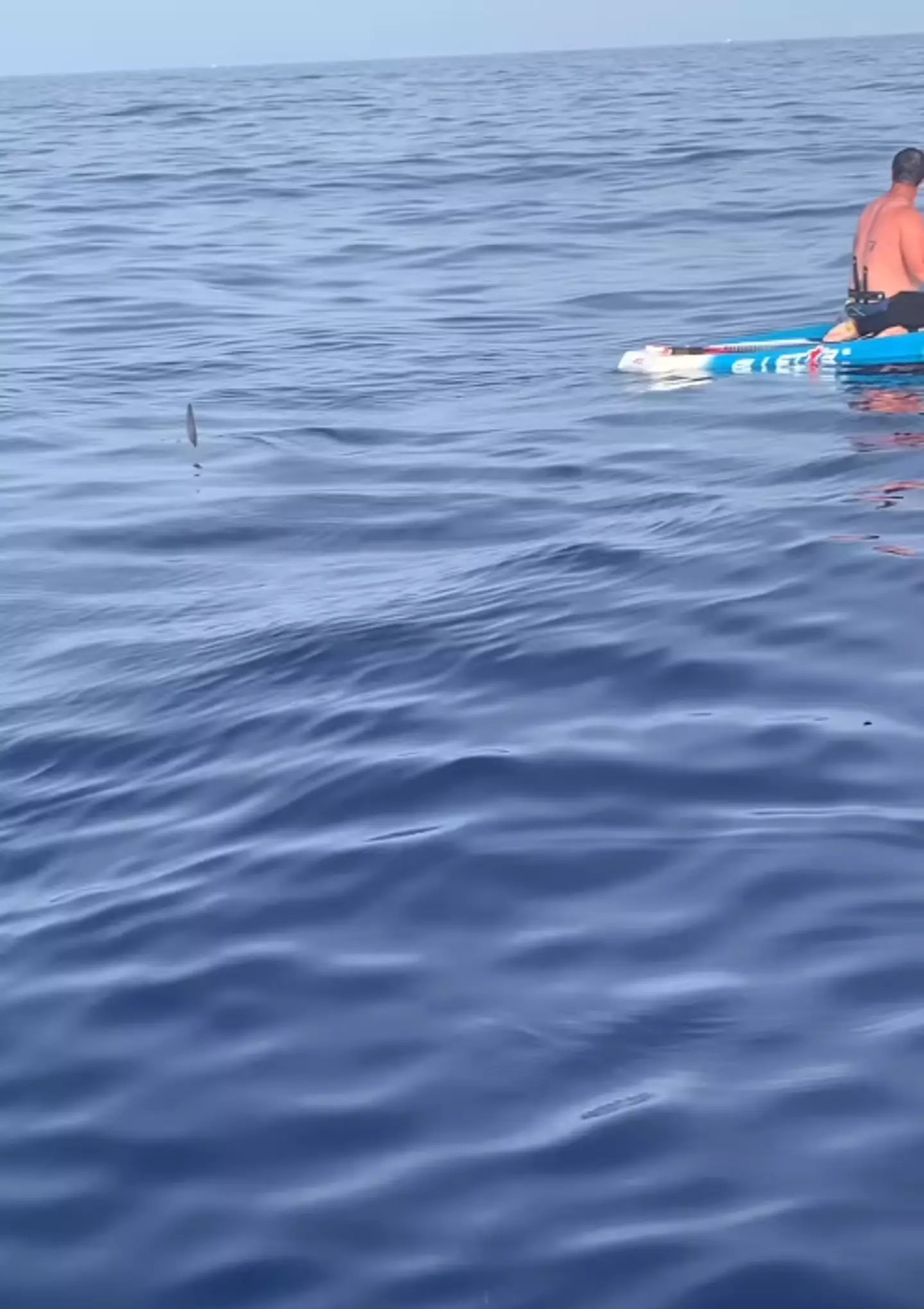
Gabe was fortunate to escape with his life. (Instagram/crossingforcf)
Malea told Fox 35 that she ‘initially felt a few taps’ on her board but dismissed it as ‘seaweed on my fin’.
“I was about 30 ft behind the boat when my husband spotted the shark fin,” she continued. “Based on his reaction, I knew immediately that it was a shark. I didn’t know how big or where exactly it was. I was surprised that it was bigger and much closer than I initially thought.”
She added: “At one point in the video, he’s completely under my board. I also noticed how quick and sleek the movements were. The shark was seemingly just curious what I was in his house.”
The clip was filmed by founder and Executive Director of The Crossing For CF event, Travis Suit, who reflected: “We are grateful Malea was not harmed and so proud of the calm and disciplined response the Tribbles had during the situation as paddle mentors in this event, providing a great example of how to handle close encounters like this. We are visitors when we are in the ocean, it’s really their home, so it’s to be expected.”
According to the International Shark Attack File, there have been 18 recorded non-fatal unprovoked incidents between humans and hammerhead sharks, but none have resulted in death.
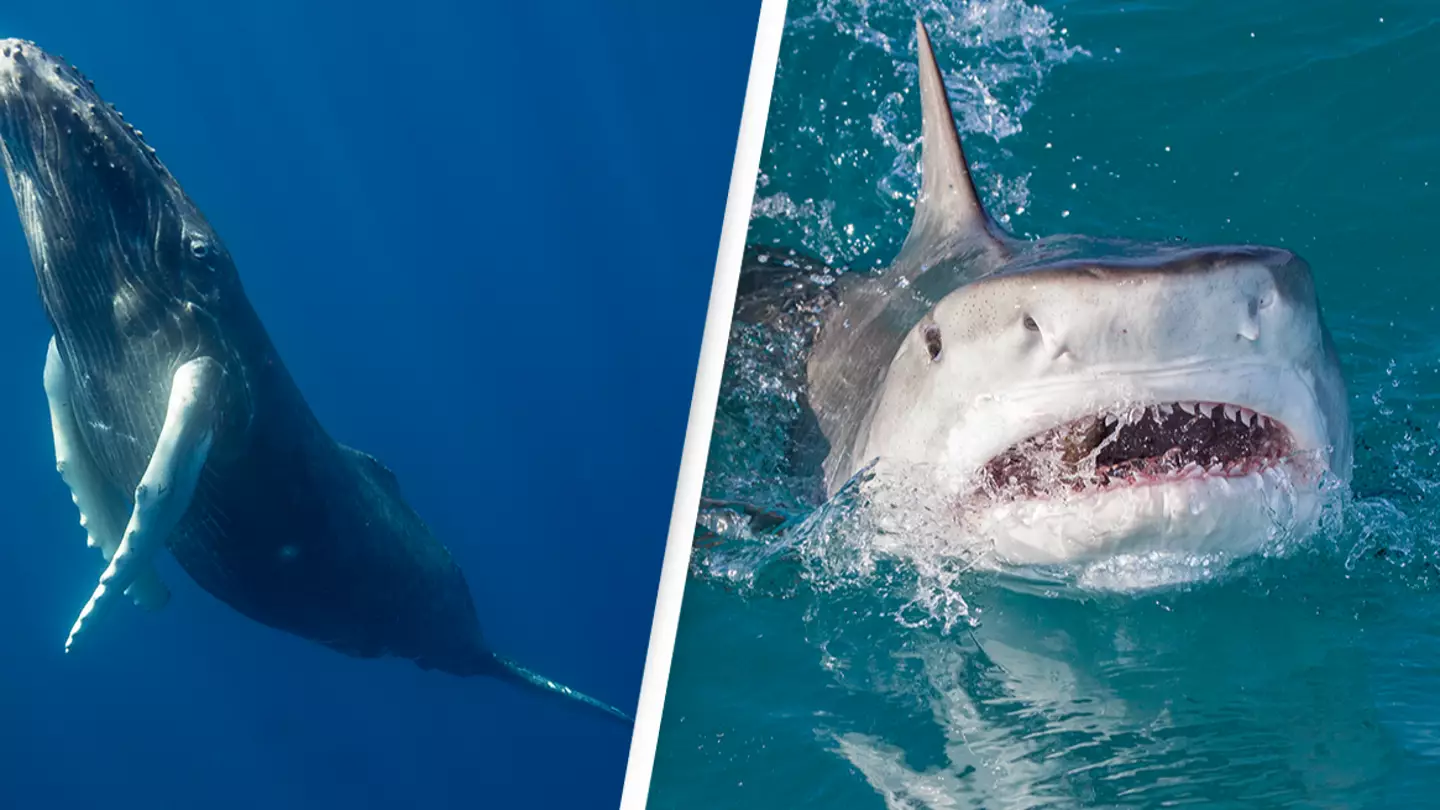
A simple goodbye just doesn’t seem like enough thanks.
Thankfully, during one life-saving incident, we do know the ending.
During a BBC Earth interview in 2021, whale scientist Nan Hauser recalled the moment she was rescued from a tiger shark by a humpback whale.
She said: “I knew there was a chance I could easily be killed by this whale.”
Though you might think it was something out of a film where the whale saves her and there’s this moment where they look into each other’s eyes in some sort of mutual understanding, it was anything but.

BBC
In fact, Hauser remembers that her run-in with both shark and whale were equally as scary.
It all began as the whale scientist was filming off Rarotonga in the Cook Islands.
She had been swimming towards two humpback whales when suddenly, one charged towards her.
With fins that are lined with sharp barnacles and gaping mouths, it’s easy to see why Hauser was so afraid of the usually calm creatures.
Hauser went on to describe the whale and how it seemed determined to tuck her under its pectoral fin, which could crush her.
But things would only go on to get scarier as the humpback nabbed her out of the ocean and onto its back, preventing her escape.
However, only then was Hauser able to understand what was happening and why she was being accosted by the whale.
Not too far away in the ocean was what looked to be two other whales, and one was smacking its tail against the water.
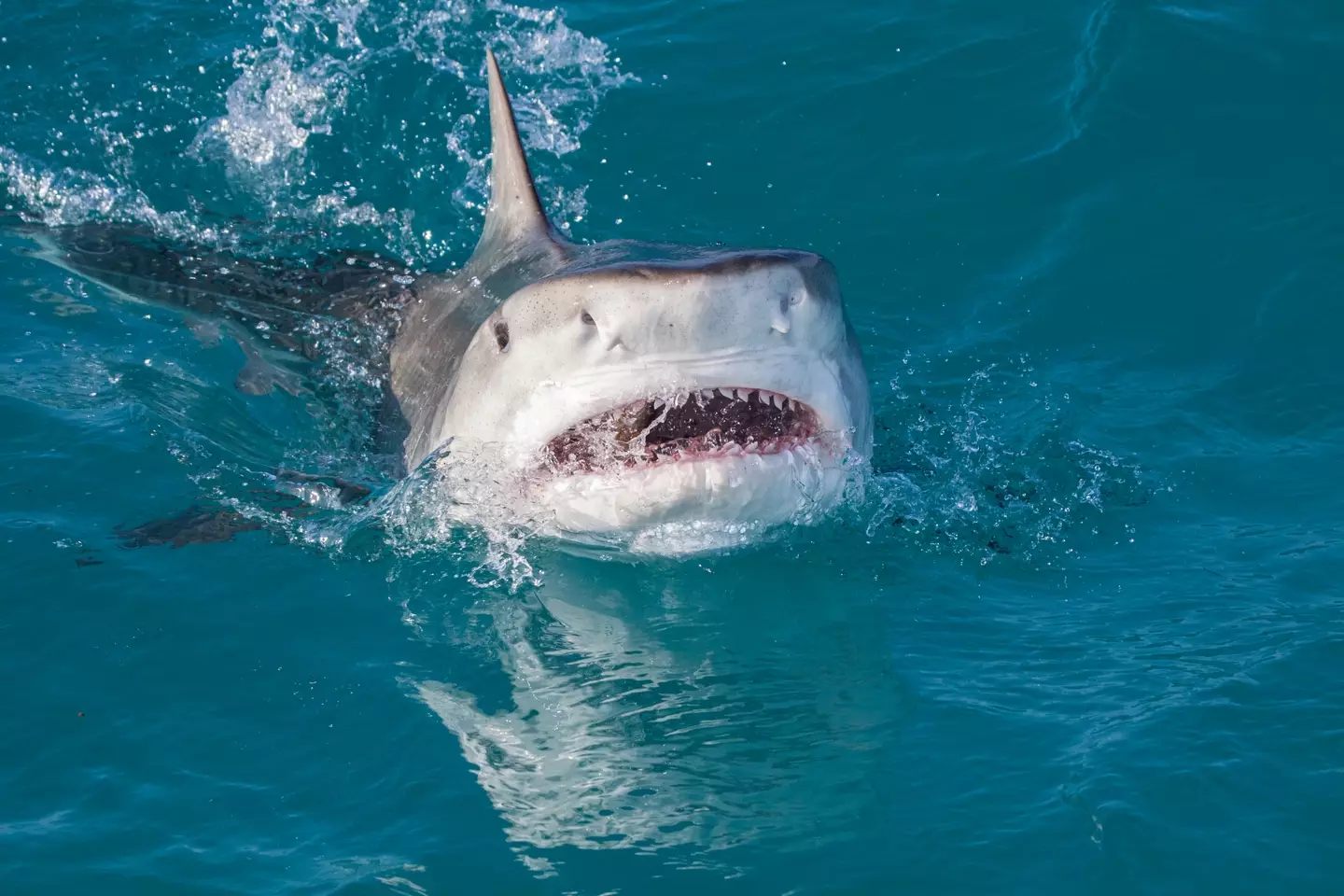
Getty Stock Image
It was only as she looked closer that she could see that the second whale was moving in a strange way, with its pectoral fins tucked and tail swishing side to side.
That’s when Hauser realized she was looking at the biggest tiger shark she’d ever seen.
She explained: “I’ve spent my entire life underwater and I’ve seen plenty of tiger sharks.
“This was like a truck. This was a huge tiger shark, and it was coming right for me.”
The scientist concluded that the whale wanted to tuck her under its fin as a way to protect her, but when it was unable, it threw her on its back carried her back to the boat.
Hauser said: “I still to this day can’t believe it happened and being a scientist it’s even harder.
“If someone told me this story, I wouldn’t believe them.”
.jpg)
Getty Stock Image
But this isn’t where their story ends as Hauser was reunited with her rescuer one year later after being radioed that a whale was in the area.
After quickly setting off to meet the marine mammal, she noticed it had the same tail as her saviour.
She said: “And then next I knew the whale came up next to the side of the boat.
“He ignored everyone else on the boat and he stared directly at me… I looked at him and I saw a scar on his head, and I just screamed ‘he’s back I can’t believe it he’s back!’ and sure enough there he was.
“I just whipped on my wetskin and slid [into the] water and I swam down next to him, and he opened his eyes and he just looked at me and kept nudging me… It was like seeing your dog that you haven’t seen in six months.”
“I miss him.
“I mean, who misses a whale?”
That’s because the petrifying footage of the moment a group of beachgoers came face-to-face with a colossal mako shark while relaxing on the beach in Florida has gone viral online.
Filmed in Pensacola, Florida, back in September this year, the heart-stopping video shows a couple standing in the shallow waters of the ocean.
Thrashing around just metres from their feet, however, is a – quite frankly – ENORMOUS deep sea predator, that looks nothing short than the stuff of nightmares.
The beast became washed up on the shore after swimming in the dangerously shallow waters, seemingly finding it impossible to return to the ocean.
The shark continues to smash its tail against the sand in an attempt to escape but is unable to reach the water.
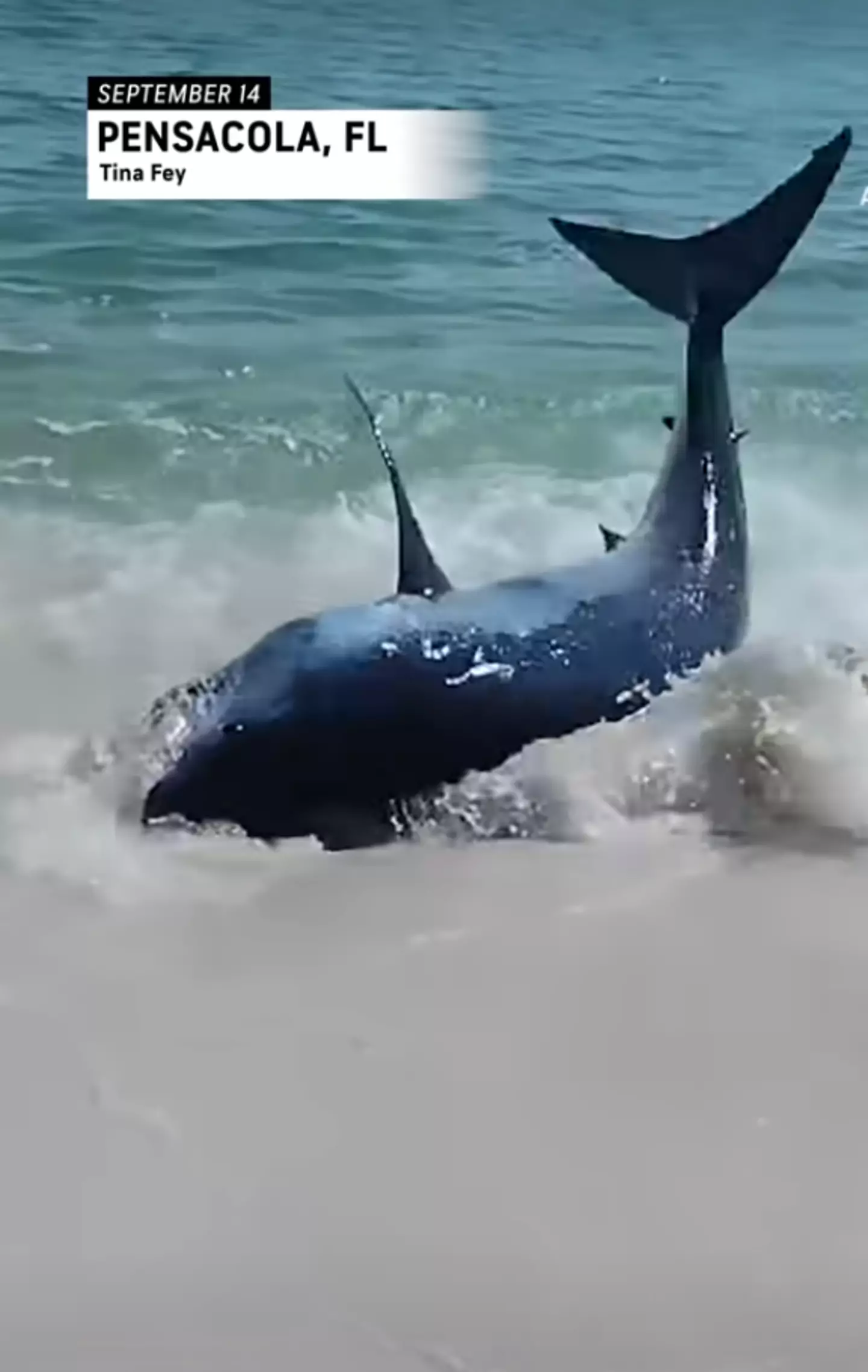
YouTube/@accuweather
A group of three men are then forced to intervene in the matter, each gripping the end of the shark’s caudal fins and trying to drag it back to the ocean.
But the animal’s staggering weight made the attempt to save its life near impossible, especially when one wrong foot could see that foot bitten off by the distressed shark.
Eventually, the group are able to drag the terrifying creature back to the water, before turning it quickly and cautiously to be facing the sea.
Once the shark was pointed in the right direction, the group scatter from the sea to the safety of the shore, watching as it swims graciously back into the crystal blue waters.
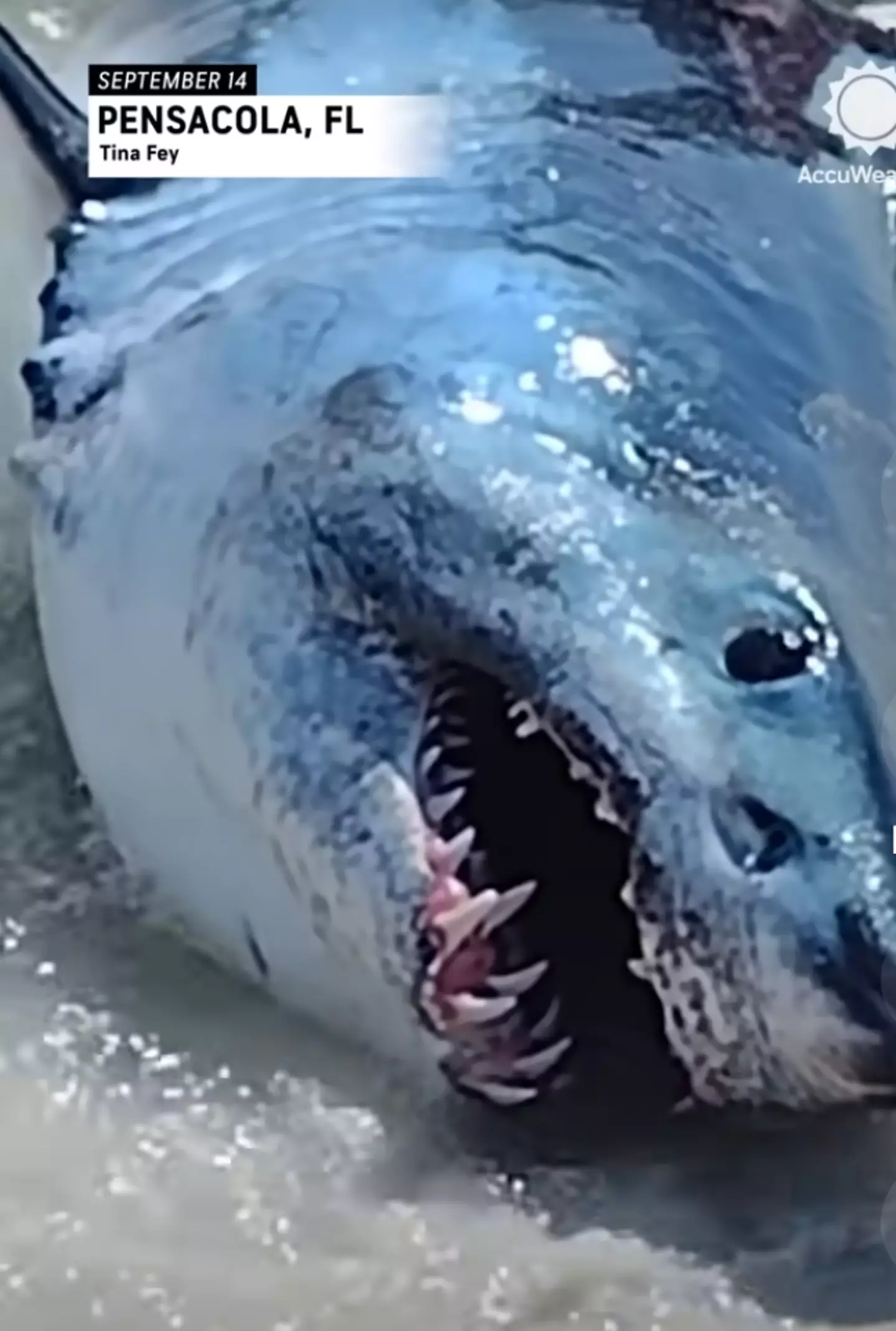
YouTube/@accuweather
Viewers in the comment section are seemingly still shaken by the nerve-wracking video, which has accumulated a staggering 634,000 views on YouTube since being published.
“That was so kind,” one viewer penned. “Even though they must have obviously been scared they decided to help”.
Another wrote: “Their braveness is incredible! Great that they did risk their health to help him out”.
“That is a HUGE mako – close relative to the white shark,” a third noted, before another added, “Love this. Despite the danger and bad wrap sharkies get, these people did the right thing 100%”.
The frightening news comes just a week after a free-diver in Australia was forced to undergo facial surgery and teeth removal after being bitten on the head by a Great White shark.
Bridgette O’Shannessy had been exploring the ocean off a reef in Adelaide along with her dive partner Brian Gordon Peters when the beast struck.
According to Perth Now, her dive parter Peters had managed to push the terrifying animal away from her and began applying pressure to her painful wounds.
Upon her arrival at Flinders Medical Centre, however, Bridgette was forced to undergo two surgeries, including having some of her teeth removed.
The university student, 32, suffered severe nerve damage, and had attained several other injuries.
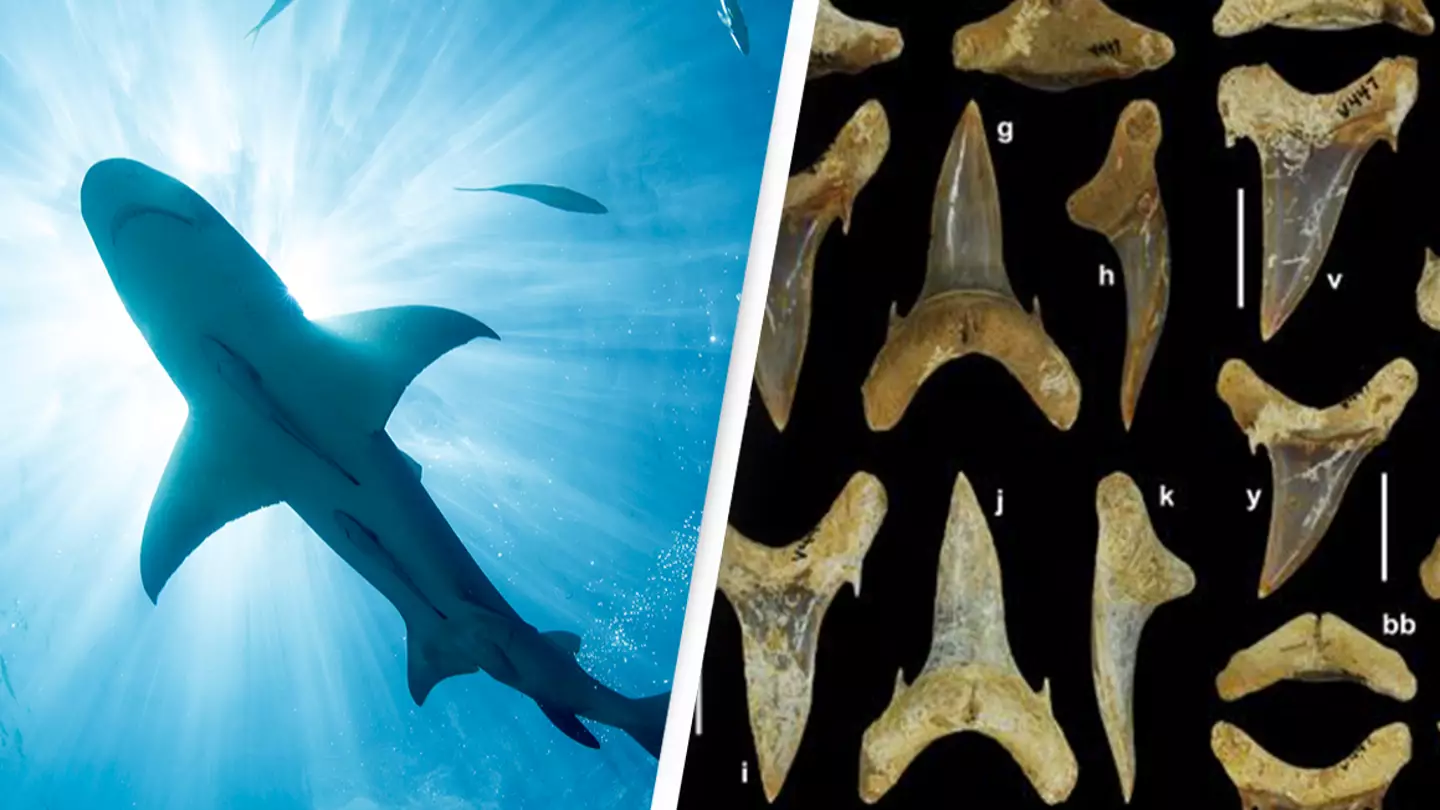
There are already plenty of sharks to be worrying about already, however, apparently there are three other ancient species of shark which used to roam the south American waters – let’s just say when you see them you’re going to feel very glad they’re not around anymore to swim in the sea with you any longer.
The Paleontological Resources Inventory (PRI) has been collecting fossils from Mammoth Cave in Kentucky and northern Alabama since 2019 and has made two groups of particularly exciting finds.
The first group of fossils are juvenile and adult teeth which were found within the St. Louis and Ste. Genevieve Formations of Mammoth Cave and the Bangor Formation in Alabama.
And the second group of fossils includes a partial set of jaws and gills found at Mammoth Cave, alongside some teeth from the St. Louis, Ste. Geneveive, and Haney Formations at Mammoth Cave and the Hartselle and Bangor Formations of Alabama too.
And a news release – shared by the National Park Service on 1 February, 2024 – has revealed the team has since identified the fossils as being from two new species of ancient sharks.
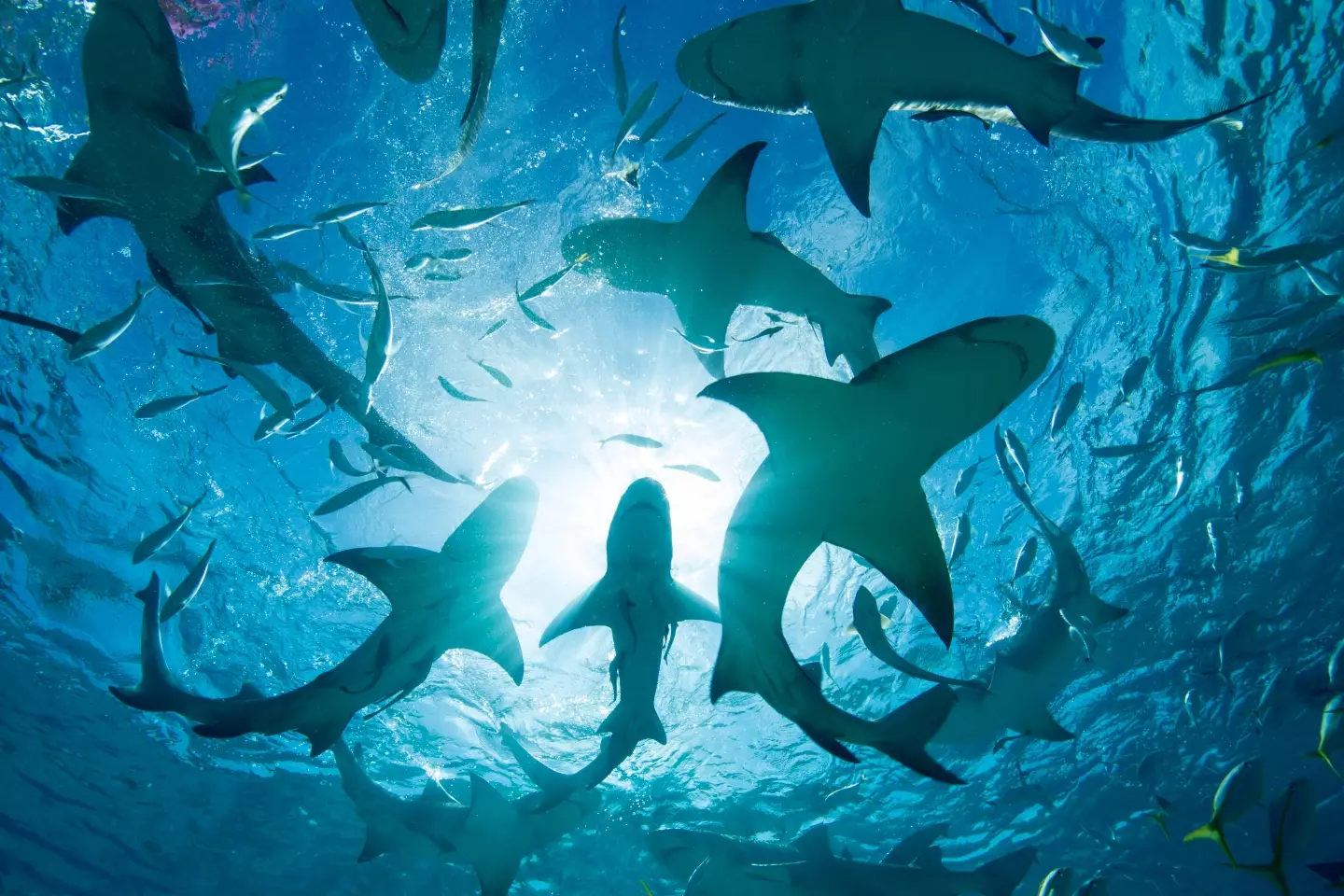
Three new ancient shark species have been discovered. (Getty Stock Images/ Stephen Frink)
Troglocladodus trimblei
The first new species of ancient shark has been called the Troglocladodus trimblei.
The National Park Service details: “The genus name means the ‘Cave Cladodus’ or ‘Cave Branching Tooth’.
“It was named in honor of park superintendent Barclay Trimble who found the very first specimen, a single tooth, on an early PRI trip in 2019.
“The Troglocladodus is estimated to have reached about 10-12 feet in length or about the size of an oceanic white tip shark.”
The second group of fossils has been identified as belonging to a new species of the Glikmanius shark.
The discovery is even more exciting as its altered scientists prediction for when the extinct genus of prehistoric shark was around – the origins now estimated as being 50 million years earlier than first predicted.
“The species was named in honor of the Cave Research Foundation (CRF) who not only support research at Mammoth Cave, but whose members also discovered the Glikmanius jaws,” the National Park adds.
The shark is estimated as having been around 10-12 feet in length – ‘or about the size of a Lemon Shark’ – and the fossil discovered of part of its jaw suggests it had a ‘short head with a powerful bite for hunting smaller sharks, bony fish, and squid-like orthocones’.

Palaeohypotodus bizzocoi teeth. (EBERSOLE ET AL.)
Palaeohypotodus bizzocoi
The third and final new species of ancient shark was discovered by a team led by Director of Collections at McWane Science Center, Jun Ebersole.
It’s a new species of the Palaeohypotodus and was named Palaeohypotodus bizzocoi after the late Dr Bruce Bizzoco – an archaeologist and volunteer at McWane Science Center.
Ebersole made the discovery after he came across ‘a small box of shark teeth that were collected over 100 years ago in Wilcox County’ while looking through ‘the historical fossil collections at the Geological Survey in Alabama’ he said, as per Eurek Alert.
Surprised he didn’t recognize the shark teeth, he realized they must be from a new species of ancient shark, the team later identifying them as being from ‘approximately 65-million-years-ago’ and the time period ‘from just after the death of the dinosaurs where over 75 percent of life on Earth went extinct’.
Fellow team member and Paleontologist and Fossil Collections Curator at the Geological Survey of Alabama in Tuscaloosa T. Lynn Harrell resolved: “Shark discoveries like this one give us tremendous insights into how ocean life recovers after major extinction events and also allows us to potentially forecast how global events, like climate change, affect marine life today.”
Featured Image Credit: Getty Images/Stephen Frink/Ebersole et al.
